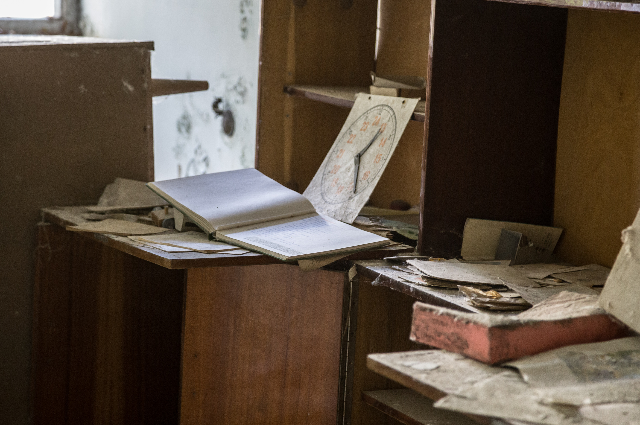
The debate surrounding whether untidiness is synonymous with creativity has been a long-standing one. While some people tend to believe that chaotic environments are conducive to creativity, others argue that organized spaces foster productivity and innovation. Although the latter may seem logical, a deeper analysis of creative personalities reveals that the former argument tends to hold true.
Untidy people are more creative. This statement is not intended to undervalue the benefits of an organized space. However, creative individuals are often less inclined to organize their surroundings since they are more concerned about fostering their imagination and promoting their inspiration. Creativity prospers in an environment that allows for innovation, curiosity, and experimentation.
A cluttered and disordered space can offer unique stimuli that provoke one's creativity. It provides a visual spectacle with intricate details and oddities that spark the imagination. For instance, Isaac Newton is known for having worked in an utterly disorderly environment filled with papers, books, and parcels, and he is widely recognized for his contributions to the math and Newtonian physics field.
In contrast, a person who favours orderliness and neatness tends to be less creative because they are less open-minded to new ways of thinking. Such individuals tend to conform to existing norms since they favour consistency and predictability. A clean space may provide a clear state of mind and a sense of calmness, but this may not be ideal for promoting creativity.
Untidiness can also promote the flow of creativity by allowing the individual to work in a comfortable setting without the pressure of maintaining order. Orderly individuals tend to become preoccupied with the details of how to keep their surroundings, which can impede their imaginative skills. Creativity thrives best in an environment free of constraints.
While the argument for the benefits of an organized space cannot be ignored entirely, it is evident that untidiness is more favourable to creativity. It provides a sense of freedom to explore and experiment without the pressure of conforming to existing patterns and routines. Untidy people are more creative since they tend to challenge existing norms, explore new ideas, and experiment with new ways of thinking.
The messy minds of creative people
The minds of creative people have always been a subject of fascination to society. These individuals often have a way of thinking that is outside of the norm, with ideas and thoughts that may seem chaotic or unstructured. However, it is precisely this messiness that enables them to come up with ground-breaking ideas and solutions that change the world. So, what is it about the minds of creative people that make them unique?
One of the defining features of creative minds is their ability to connect seemingly unrelated ideas and concepts. They can pull from a wide range of experiences and knowledge to create something new and innovative. This divergent thinking can lead to a lot of mental clutter, as ideas pile up and compete for attention. However, it is often the unexpected connections between these ideas that lead to breakthroughs.
In addition to the clutter of ideas, creative minds also tend to be more open to ambiguity and uncertainty. They are comfortable with the unknown and are willing to explore uncharted territory. This exploratory mindset can lead to an endless stream of questions and curiosities, making it difficult to focus on any one thing for too long. Their wandering minds are constantly seeking out new information and insights, which can be both exciting and overwhelming.
Furthermore, creative minds also tend to generate a lot of mental noise. This can take the form of self-doubt or self-criticism as they strive for perfection in their work. Additionally, their high level of sensitivity and emotional intensity can lead to a lot of inner turmoil. They are often deeply invested in their work, which can be both rewarding and exhausting.
All these factors contribute to the messy nature of creative minds. However, this messiness is not a weakness but rather a strength. The ability to connect seemingly unrelated ideas, explore the unknown, and be deeply invested in one's work are all essential components of creativity. Without these elements, the invention would be impossible.
So, how can creative individuals harness the power of their messy minds? One approach is to embrace the chaos and develop strategies for managing it. This may involve setting aside dedicated time for brainstorming or implementing systems for keeping track of ideas. Additionally, finding ways to minimize distractions and focus on one task at a time can help to reduce mental clutter.
Another approach is to seek out environments and relationships that are supportive of creative thinking. Collaborating with individuals who share a similar mindset can be incredibly beneficial, as it provides an outlet for sharing ideas and working through mental blocks. Similarly, finding a space that allows for uninterrupted focus and creative exploration can help to foster a more productive and satisfying creative process.
Why do creative people work better when messy?
Creative people work better in messy surroundings because clutter can spark their imagination and creativity. Chaos, disarray, and disorder can stimulate the mind and provide unique inspiration for artists, writers, and designers. When surrounded by a chaotic environment, their brains are forced to make connections and associations between seemingly unrelated items or ideas, which can lead to unique and innovative solutions to creative problems. Additionally, creative minds enjoy a certain amount of freedom and flexibility in their work environment, which can be stifled by overly organized and tidy surroundings. Messy workspaces offer the opportunity to explore and play with different layout options, tools, and materials without worrying about rules or restrictions. Ultimately, a little messiness can go a long way when it comes to unlocking creativity and stimulating the imagination.
In conclusion, the cluttered minds of creative people are complex and multifaceted. They are characterized by a plethora of ideas, comfort with ambiguity, and a high level of emotional sensitivity. Although this messiness can be overwhelming at times, it is ultimately what enables creative individuals to come up with novel and innovative ideas. By embracing the chaos and developing strategies for managing it, creative minds can unlock their full potential and change the world with their work.
